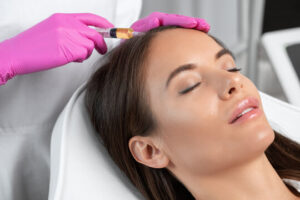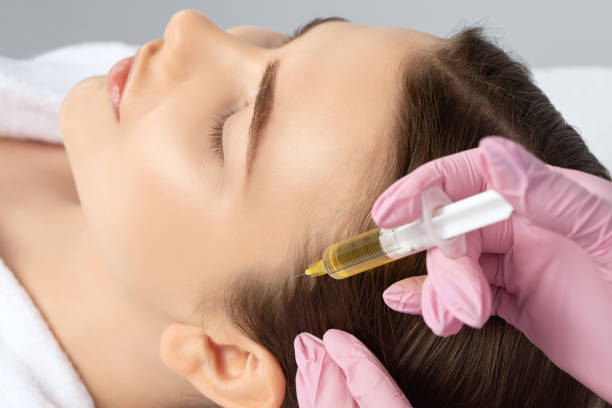PRP Hair Treatment in Abu Dhabi is a popular non-surgical method for promoting hair growth and improving hair density. By utilizing the body’s natural healing properties, PRP therapy involves injecting platelet-rich plasma into the scalp to stimulate hair follicles and encourage growth. One of the most common questions people have about PRP hair treatment is how long its effects last. While the results can vary from person to person, there are several factors to consider when determining the longevity of the effects of PRP hair treatment.
Understanding the Process of PRP Hair Treatment
PRP hair treatment involves three main steps:
- Blood Draw: A small amount of blood is drawn from the patient, typically from their arm.
- Plasma Separation: The blood is placed in a centrifuge to separate the platelet-rich plasma from other blood components.
- Injection: The concentrated PRP is then injected into the scalp in areas of thinning or hair loss.
Platelets are rich in growth factors that stimulate the healing of tissues, and in the case of hair growth, they encourage the regeneration of hair follicles, improve circulation in the scalp, and help rejuvenate dormant follicles.

How Long Do the Results Last?
The effects of PRP hair treatment are not permanent, but they can be long-lasting with proper maintenance. Typically, patients begin to see visible results in 2 to 3 months, with improvements continuing up to 6 months after the treatment. The longevity of the effects depends on several factors, such as:
1. Individual Response to Treatment
Everyone’s body reacts differently to PRP therapy. While some people may experience noticeable improvements in hair growth and density for a prolonged period, others may see more modest results. Factors such as overall health, hair loss type, and genetics play a significant role in how effective the treatment will be for an individual.
2. Hair Loss Progression
PRP works best in individuals who are in the early to moderate stages of hair thinning or hair loss. Those who are experiencing more advanced hair loss, such as extensive baldness, may not see as dramatic results. PRP is most effective for individuals with active hair follicles that can be stimulated, so those with certain types of alopecia or permanent hair follicle damage may not benefit as much from the treatment.
3. Maintenance Sessions
While the effects of PRP treatment can last several months, maintenance sessions are often recommended to prolong the benefits. Typically, patients may need to return for additional PRP sessions every 4 to 6 months, depending on their specific needs. This helps to maintain the stimulation of hair follicles and ensures that hair growth continues at an optimal rate.
4. Lifestyle and Health Factors
Healthy lifestyle choices, such as a balanced diet, regular exercise, and avoiding stress, can support the longevity of PRP results. Additionally, taking care of your hair with gentle, non-damaging products can help maintain the benefits of the treatment. On the other hand, factors like poor nutrition, smoking, and excessive stress can negatively impact the results of PRP therapy.
5. Hair Care After Treatment
Post-treatment care is essential to maximizing the longevity of PRP results. After your treatment, your provider may give you specific aftercare instructions, which could include avoiding strenuous activities, direct sun exposure, and harsh hair treatments for a few days. Following these instructions can prevent any potential setbacks that might interfere with your hair growth.
How to Maintain PRP Results?
To ensure that the results of PRP hair treatment are long-lasting, it’s important to follow a few simple guidelines:
- Regular PRP Maintenance: Depending on how well your hair responds to treatment, you may need follow-up sessions every 4 to 6 months to maintain optimal results.
- Healthy Hair Care Routine: Use mild, nourishing hair products, avoid excessive heat styling, and keep your scalp clean and healthy.
- Healthy Lifestyle: Maintain a balanced diet, stay hydrated, exercise regularly, and manage stress to support overall health and hair growth.
- Consider Combining Treatments: Some people opt to combine PRP therapy with other treatments, such as minoxidil or low-level laser therapy, to maximize their results.
Conclusion
The effects of PRP hair treatment typically last for several months, with noticeable improvements in hair density and thickness beginning around 2 to 3 months after the initial treatment. While the results are not permanent, with proper care, maintenance sessions, and a healthy lifestyle, the results can be long-lasting. PRP is a great option for individuals looking to address thinning hair or early-stage hair loss, but its effectiveness will depend on a variety of factors, including the individual’s response to treatment, the progression of their hair loss, and their commitment to follow-up care. If you’re considering PRP hair treatment, it’s important to consult with a professional to discuss your specific needs and expectations to ensure the best possible outcome.

